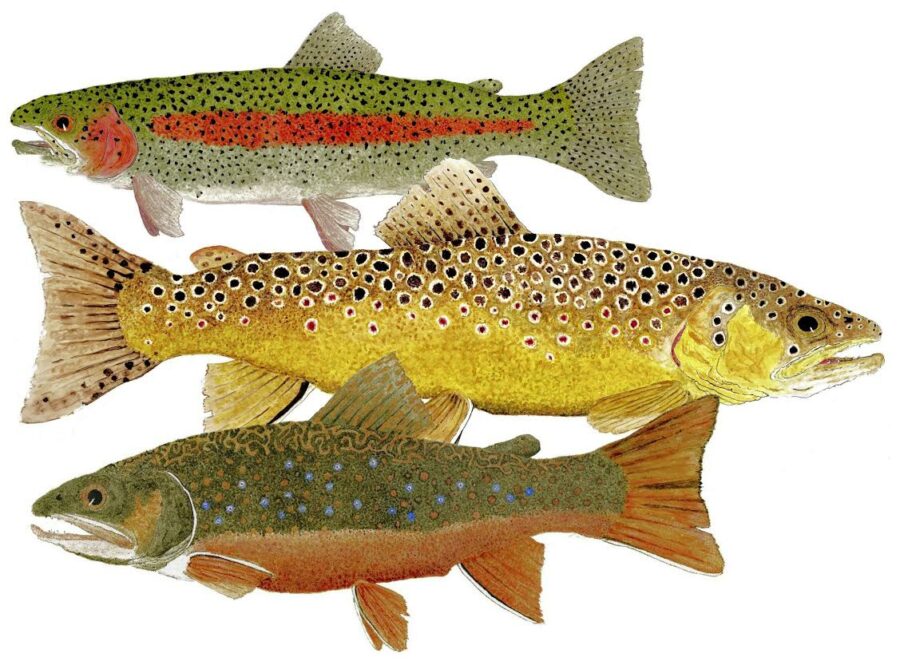
Reprinted with permission – Rainbow, Brown, and Brook. The rainbow is a westerner by birthright and includes the steelhead, and the brook is a native easterner, but it is not a trout. It’s a char with Maine and Eastern Canada, where the big boys get caught. This illustration by world-renowned watercolorist Thom Glace.
Tube and hook-tied flies versus tail biters
By Skip Clement
Occasionally, there can be frustration dealing with hook-tied flies as well as with tube tied flies being attacked by tail-biting fish, and it is often misunderstood. The problem may stem from the hook being too far separated from the body of the fly, causing the fish to miss the hook. This design flaw can be easily corrected without compromising the integrity of the tube fly, but of no help on hook-tied flies except to discard.
During the early season of 2024 at the Eberly Farmstead in North Georgia, we encountered fast currents while using long leaders and a series of abnormal missed hook-sets by Angie on a tail-out that had always been productive especially early season.
Looking under the hood
Upon close inspection – swimming the fly in less turbulent water, we realized that the hook was not compromised. Instead, it was riding down while the tail ‘feathers’ rode up, causing the fish to hit the higher riding material of the attractor pattern and miss the hook.
To address this issue, I replaced the heavy #6 4x long hook with a Fulling Mill #10 continuous curve, 3x long, claw point, non reflective black hook, effectively changing the center of gravity and allowing the fly to ride nearly level. This adjustment significantly improved the hook-ups. Angie losing only one nice brown trout during retrieval.

Angie, a former prosecuting attorney, prefers anonymity.
Stick with brand name hooks
It is important to emphasize the quality of hooks, as using poor wire quality hooks, as I had on Angie’s attractor fly, can lead to significant angling consequences. In this case, purchasing low-quality hooks resulted in lost catches for Angie. To avoid similar issues, it’s crucial to invest in high-quality hooks to ensure successful fly fishing experiences.
Charles’ videos are all worth watching
‘Basics of tube flies: Making sure that our flies ride level‘ by Peter Charles . . .







